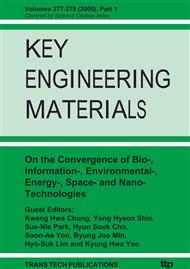p.912
p.919
p.929
p.935
p.939
p.945
p.950
p.956
p.961
Shear Flow Analysis of Nanosize Particle Flow Behavior Using Kinetic Theory
Abstract:
Nanosize particle flow is significantly affected by inter-particle force. Due to the inter-particle force, the most significant characteristic of nanosize particle flow may become the formation of agglomerates or clusters which considerably affects the flow patterns. The formation of agglomerates or clusters results in a reduction in the number and an increase in the size of particles, both of which directly affect the frequency of inter-particle collisions and, in turn, the particle phase properties such as viscosity and pressure, as well as gas/particle drag force in gas/particle flow systems. In this present work, we focus our attention on the verification of nanosize particle flow behavior due to the formation of agglomerates or clusters under different fluctuation of flow and inelasticity of particle collision. By extending the application of the cohesive model using kinetic theory to nanosize particle flow system, we performed the homogeneous simple shear flow analysis using various fluctuation energy and restitution coefficient. The predicted flow properties, such as particle diameter growth, agreed well with the expected trends.
Info:
Periodical:
Pages:
939-944
Citation:
Online since:
January 2005
Authors:
Price:
Сopyright:
© 2005 Trans Tech Publications Ltd. All Rights Reserved
Share:
Citation:


